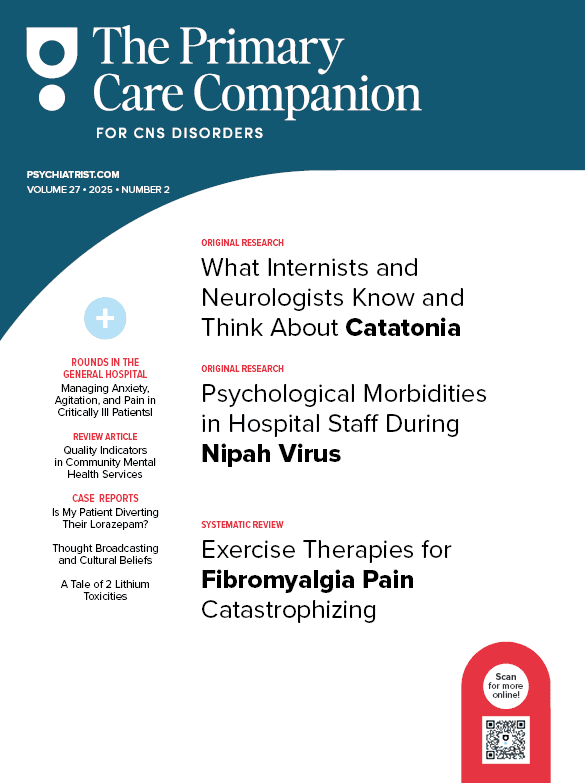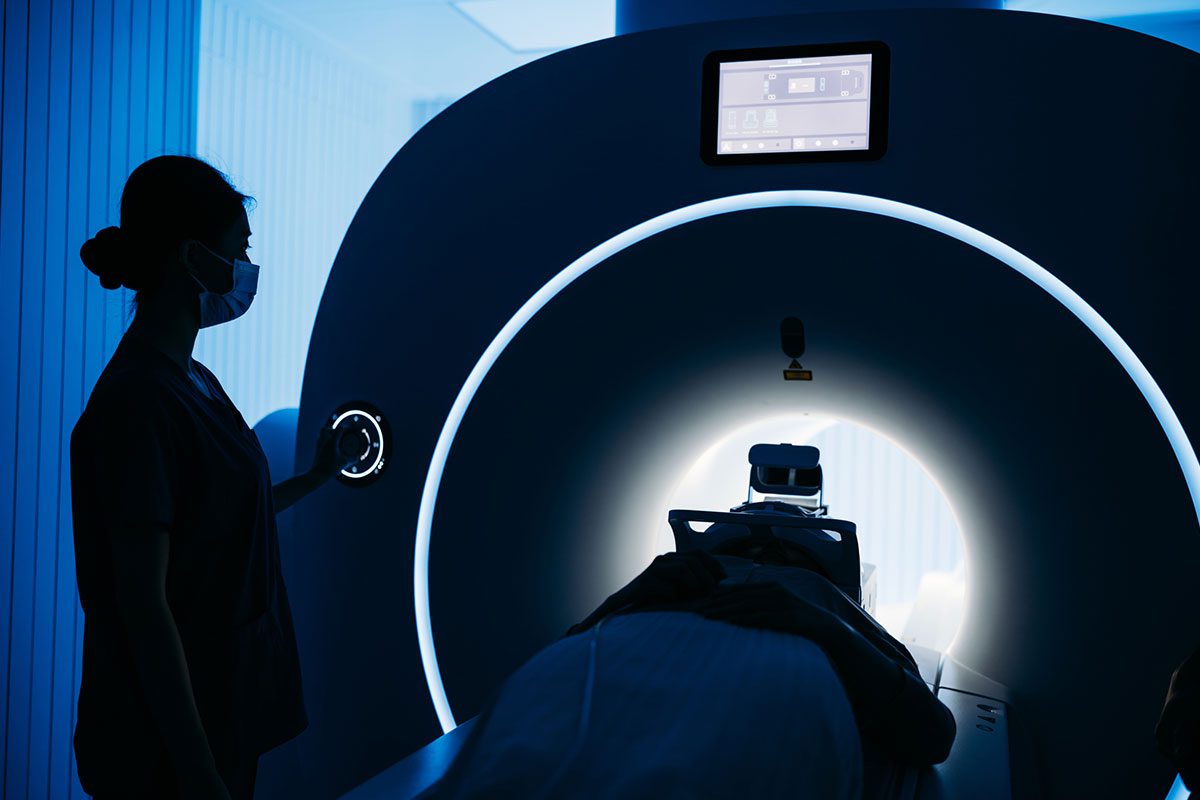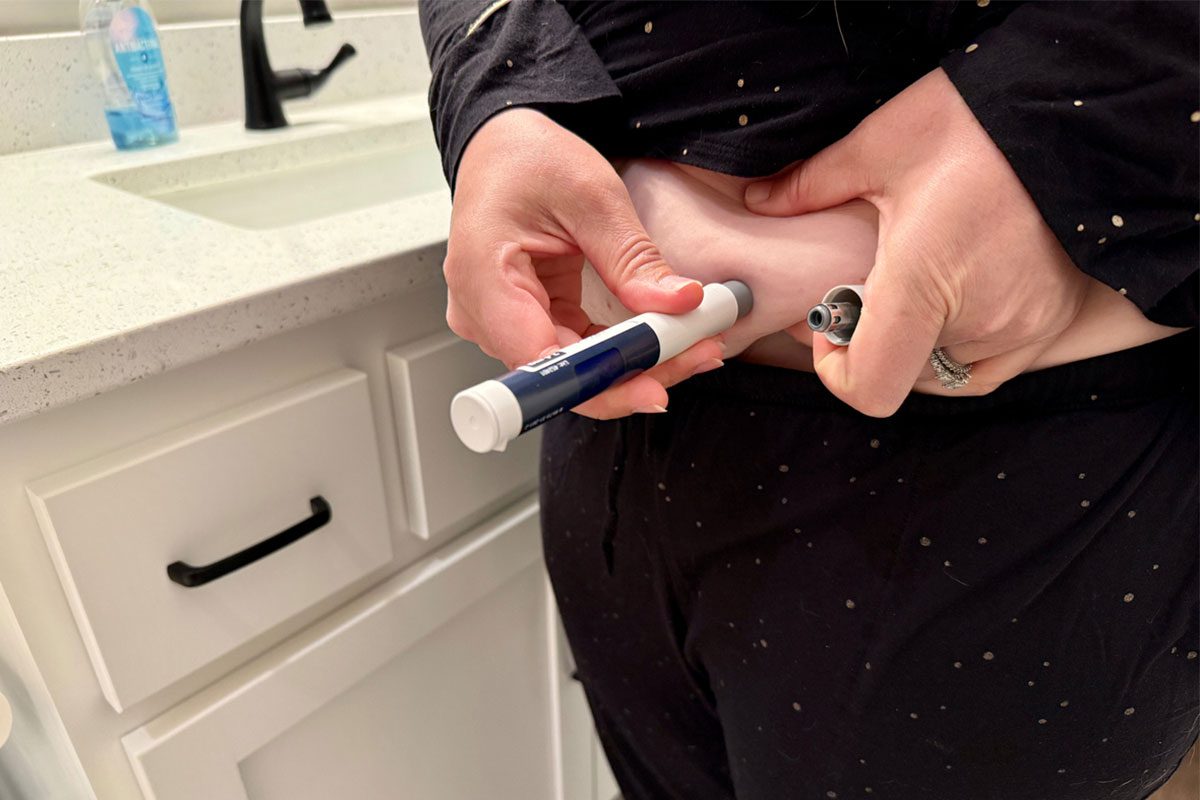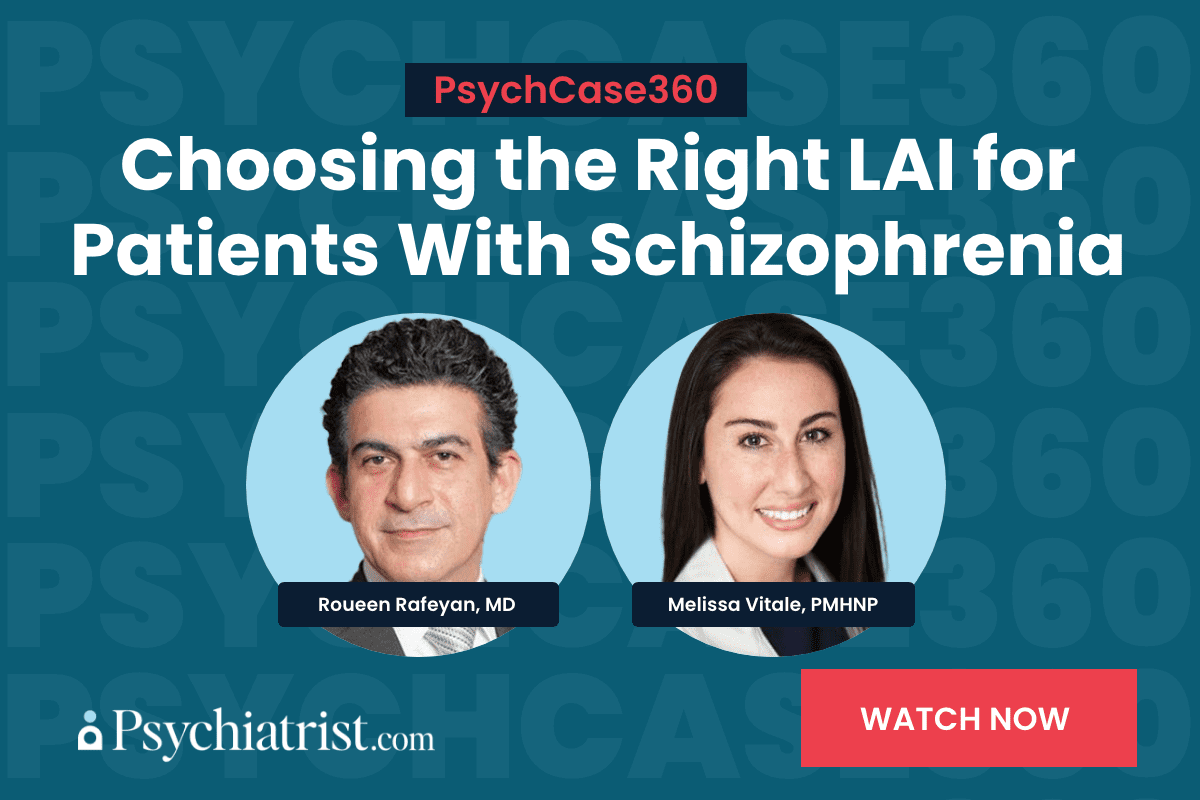Psychostimulant-related emergency department (ED) visits have increased over 5 times from 2008 to 2018.1 Cocaine is a dangerous psychostimulant that can lead to adverse and life-threatening cardiac consequences including arrhythmias and myocardial infarctions,2 and its abuse remains steady with 24.6 million users worldwide.3 It has long been debated whether β-blockers should be contraindicated for treatment of cocaine-induced cardiac toxicity due to the unopposed α-stimulation effects of vasoconstriction and hypertensive crisis. A review by Richards et al4 found no evidence in the literature for unopposed α-stimulation with carvedilol treatment for cocaine toxicity. This could be due, in part, to the fact that carvedilol is a nonselective β1, β2, α1 blocker, although the ratio is 10:10:1.5 In this case report, we describe an interesting phenomenon wherein cocaine-induced cardiac toxicity with reduced ejection fraction masked the bradycardia and subsequent cardiogenic shock from carvedilol toxicity.
Colchicine and β-blockers are commonly prescribed medications but can be lethal in intentional or unintentional overdose.6 Colchicine is typically used to treat acute gout and has a narrow therapeutic index, with the lowest reported lethal dose of 7 mg. It is absorbed through first pass metabolism, has a wide tissue distribution, and binds to tubulin intracellularly to disrupt microtubule assembly. Colchicine is then metabolized by the liver, undergoes enterohepatic recirculation, and is excreted by the kidneys. If colchicine is ingested in lethal doses, it disrupts the function of cardiac myocytes, which ultimately leads to decreased contractility and death.7 Colchicine poisoning usually presents with gastrointestinal symptoms such as vomiting and diarrhea, followed by multiorgan failure and sepsis. Overdoses with β-blockers are more common than colchicine overdoses, with 9.6% of overdose cases having a moderate-to-severe outcome. Highly lipophilic β-blockers can cross the blood-brain barrier easily, leading to seizures and other central nervous system manifestations. They can also cause QRS or QTc prolongation in some cases due to sodium or potassium channel blockade and frequently lead to hemodynamic instability with bradycardia and hypotension due to catecholamine-blocking effects.8
Many patients that ingest lethal amounts of these compounds have comorbid psychiatric or substance use disorders. In this case, we discuss a patient with cocaine use disorder who ingested both colchicine and carvedilol. To date, there are no data on the coingestion of these 2 substances, although 1 study demonstrates that carvedilol prevents colchicine-induced oxidative damage in animal models.7
Case Report
A 29-year-old man, unemployed and living alone, with a past medical history notable for cocaine-induced myopericarditis diagnosed 11 days prior to presentation, past psychiatric history of stimulant use disorder and nonsuicidal self-injurious behavior by cutting, and no prior psychiatric hospitalizations or regular outpatient treatment, was admitted to the ED after reported overdose of cocaine, methamphetamine, and 12–15 tablets of carvedilol IR 6.25 mg. Regarding recent diagnosis of myopericarditis, limited records from an outside hospital indicated that the patient had presented to their ED with chest pain 2 weeks prior and was found to have diffuse ST elevations, a HS-troponin peak of 17,000, left-heart catheterization with no atherosclerosis but transthoracic echocardiogram with new acute systolic left ventricular dysfunction with ejection fraction of 40%, and cardiac MRI with left ventricular global hypokinesis and findings of myopericarditis. The patient was discharged after 3 days on a regimen of carvedilol 6.25 mg 2 times daily and colchicine 0.6 mg 2 times daily.
On initial evaluation in the ED, the patient reported dizziness but denied any chest pain or shortness of breath, denied suicidal ideation, and stated that he had been trying to “get high.” His initial vital signs in the ED were stable with a heart rate of 80 bpm, blood pressure of 136/67 mm Hg, respiratory rate of 16 breaths per minute, temperature of 98.4°C, and SpO2 of 100%. Electrocardiogram (EKG) was notable for normal sinus rhythm without AV block, widened QRS, or prolonged QTc, though with T wave inversions in leads I, aVL, and V1-V6 thought to be consistent with recent myopericarditis and not due to ongoing ischemia. Toxicology was consulted and recommended 50 g activated charcoal and monitoring on telemetry for 6 hours, with no indication for glucagon for β-blocker overdose unless he developed signs of hypotension or bradycardia. He was observed for 6 hours and maintained stable vital signs with a plan to transfer to the psychiatric ED for further assessment of overdose. Prior to transfer to psychiatry, the patient had 1 episode of emesis and was administered Zofran 4 mg IV and 1 L of normal saline. After another hour of observation in the ED with no further emesis and stable vital signs, the patient was transferred to the psychiatric ED.
On initial evaluation in the psychiatric ED at approximately 10:00 PM, the patient was somnolent and unable to engage in a full evaluation. Collateral information was gathered from the patient’s mother, who reported that he had a long history of severe stimulant use disorder as well as self-harm by cutting. She reported that he had called to ask her to check on him in his apartment early that morning, and she had arrived to find the patient altered and intoxicated with an empty bottle of carvedilol on his dresser. She wanted to call 911 due to concerns about an overdose but stated it took several hours before he agreed to come to the hospital. She was unsure about the intent of the patient’s overdose. The patient was placed on psychiatric ED hold for further metabolization and evaluation.
Around 8:00 AM the next morning, the patient complained of chest pain and abdominal pain 9/10, was pale, lethargic, and tachycardic (heart rate of 103 bpm). The patient was immediately transferred to the ED, where he was found to have peripheral cyanosis and dry mucous membranes and was hypotensive to 80/60. Chest X-ray showed cardiogenic pulmonary edema, and EKG showed T wave inversions in lateral precordial leads and in leads I and aVL. Laboratory values were notable for marked leukocytosis to 41.64 and signs of multiorgan failure with a pH of 7.29 on arterial blood gas lactate of 4.3 mmol/L, creatinine of 2.20 mg/dL, and aspartate transaminase/alanine transaminase of 325/313 U/L. While in the ED, the patient’s mental status deteriorated, and a bedside cardiac ultrasound showed significantly reduced global functioning. The patient was started on norepinephrine bitartrate 0.5 µg/h for the management of cardiogenic shock with moderate improvement in mental status.
At this point, toxicology was reconsulted to consider delayed β blocker toxicity. Toxicology reported that the presentation did not appear consistent with delayed β-blocker toxicity, and while the patient had not reported ingesting colchicine, his presentation of marked leukocytosis with nausea, vomiting, and diarrhea was consistent with colchicine overdose in this patient with an existing colchicine prescription. When asked specifically about colchicine ingestion, the patient reported taking approximately 30 pills of colchicine 0.5 mg (15 mg total), stating he had not felt any effects from this medication and therefore did not think it was important to mention. The patient was then re-evaluated by toxicology, who noted that if the patient’s presentation was driven solely by colchicine overdose, his multisystem organ injury, impaired cardiac function, and troponin elevation (subsequent HS-troponin of 71 ng/mL) conferred a grave prognosis.
A multidisciplinary discussion was held between toxicology, the medical intensive care unit (MICU), the cardiac care unit, and the extracorporeal membrane oxygenation (ECMO) team, and it was decided to admit the patient to the MICU for the evaluation of ECMO in the setting of colchicine overdose and cocaine-induced cardiomyopathy. In the interim, given that treatment of colchicine overdose is solely supportive while β-blocker overdose is amenable to intervention, the patient was initiated on high-dose insulin euglycemia therapy with toxicology attending at bedside. Unfortunately, the patient subsequently failed ECMO and was unable to maintain mean arterial pressure despite numerous resuscitation efforts with inotropes, vasopressors, mechanical ventilation, and ECMO. Sadly, the patient passed away shortly thereafter.
Discussion
This case brings to light the importance of reviewing drug history and use of substances and consideration of drug-drug interactions while evaluating and determining the clinical needs of the patient. In our case, the patient presented with β-blocker overdose and co-occurring cocaine use with relatively stable vitals despite a large dose of α-β-blocker use. Eventually, the patient developed bradycardia and hypotension. This may have been a result of cocaine masking the toxicity of β-blockers via sympathetic activation and eventually the effect wearing off leading to signs of α-β blocker toxicity. Additionally, reports of colchicine overdose were not received until day 2, which prevented early action and could have potentially impacted the overall presentation. This led to a delay in identification and institution of treatment protocols such as ECMO,6 due to the lack of knowledge of colchicine overdose greater than 1 day prior to presentation.
Carvedilol is an α-β-blocker, and the typical unmasking of α activity seen with β-blocker overdose was not seen in this patient. Otherwise, coingestion of β-blockers with cocaine could lead to sympathetic hyperactivity and increase the risk of aortic dissection and other cardiovascular events.8
A literature review with search terms “(Cocaine and Beta Blocker) and (Overdose or Co Ingestion)” revealed no results nor did a search with “(Cocaine AND Colchicine and Beta Blocker) and (Overdose or Co Ingestion).” Hence, this case appears to be the first, to our knowledge, to report the results of a patient with coingestion of cocaine, an α-β-blocker, and colchicine.
The case is a unique presentation of an overdose wherein there was an initial overdose followed 24 hours later with an overdose of a second group of medications as well as substances that counter the effect of the overdosed medications. Hence, the case brings to light the importance of thoroughly reviewing ingestions in patients presenting with overdose attempts and consulting toxicology with a full list of medications and substances that have been administered. Given the patient’s coingestion of cocaine and α-β blockers, the cocaine may have easily masked the bradycardia due to carvedilol overdose that later manifested itself leading to activation of critical care measures.
Additionally, the patient’s medical history also may have contributed to a poorer prognosis. Overall, we must be mindful of any concerning medical issues while evaluating suicidality in a patient with recent overdose and actively consult medical experts for prompt implementation of medical care when there is a cause for concern. This may enable us to promptly identify and intervene in such cases to institute early critical care interventions.
Conclusions
While managing overdose in an emergent setting, treatment teams often consider the primary offending agent and overlook other potential interactions that may affect outcomes. This case highlights the importance of carrying out a thorough medication and substance ingestion history in patients presenting with history of an overdose.
Article Information
Published Online: June 5, 2025. https://doi.org/10.4088/PCC.25cr03920
© 2025 Physicians Postgraduate Press, Inc. Prim Care Companion CNS Disord 2025;27(3):25cr03920
Submitted: January 14, 2025; accepted March 10, 2025.
To Cite: Levine O, Mitra S. β-blocker and colchicine coingestion in the setting of cocaine intoxication. Prim Care Companion CNS Disord 2025;27(3):25cr03920.
Author Affiliations: Maimonides Medical Center, Brooklyn, New York (Levine); Bellevue Hospital Comprehensive Psychiatry Emergency Program, New York University School of Medicine, New York, New York (Levine, Mitra).
Corresponding Author: Souparno Mitra, MD, Department of Psychiatry, Bellevue Hospital, 462 1st Ave, New York, NY 10010 ([email protected]).
Relevant Financial Relationships: None.
Funding/Support: None.
Additional Information: Information has been de-identified to protect patient anonymity.
References (8)

- Suen LW, Davy-Mendez T, LeSaint KT, et al. Emergency department visits and trends related to cocaine, psychostimulants, and opioids in the United States, 2008-2018. BMC Emerg Med. 2022;22(1):19. CrossRef
- Ghuran A, Nolan J. The cardiac complications of recreational drug use. West J Med. 2000;173(6):412–415. PubMed CrossRef
- Carbone MG, Maremmani I. Chronic cocaine use and Parkinson’s disease: an interpretative model. Int J Environ Res Public Health. 2024;21(8):1105. CrossRef
- Richards JR, Hollander JE, Ramoska EA, et al. β Blockers, cocaine, and the unopposed α-stimulation phenomenon. J Cardiovasc Pharmacol Ther. 2017;22(3):239–249. CrossRef
- Book WM. Carvedilol: a nonselective beta blocking agent with antioxidant properties. Congest Heart Fail. 2002;8(3):173–190. CrossRef
- de Lange DW, Sikma MA, Meulenbelt J. Extracorporeal membrane oxygenation in the treatment of poisoned patients. Clin Toxicol (Phila). 2013;51(5):385–393. PubMed CrossRef
- Kumar A, Dogra S. Neuroprotective effect of carvedilol, an adrenergic antagonist against colchicine induced cognitive impairment and oxidative damage in rat. Pharmacol Biochem Behav. 2009;92(1):25–31. PubMed CrossRef
- Khalid MM, Galuska MA, Hamilton RJ. Beta-blocker toxicity. [Updated 2023 Jul 28]. In: StatPearls [Internet]. StatPearls Publishing; 2024. https://www.ncbi.nlm.nih.gov/books/NBK448097/
Please sign in or purchase this PDF for $40.




